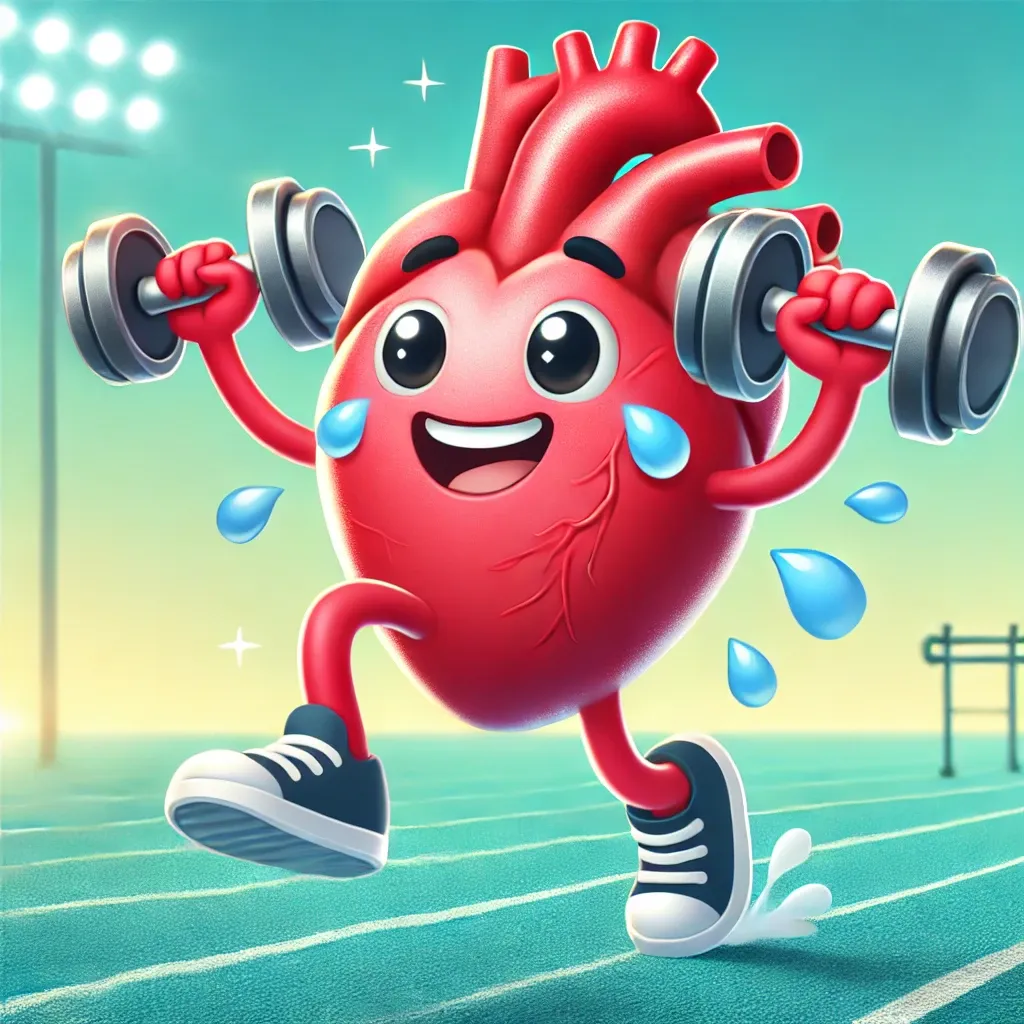Pump It Up: How to Keep Your Heart Healthy and Active

It’s Friday, Varrock Street Journal Community!
Cardiovascular health is one of the most critical aspects of overall well-being, yet it is often overlooked in daily life. Many of us know that physical activity is important, but how much do we really need? What types of cardiovascular exercise are best for different age groups? This week, we’re diving into the U.S. health standards for cardiovascular fitness, the best ways to meet these recommendations, and a scientific look at different forms of exercise such as running versus other cardiovascular workouts.
Cardiovascular Health Recommendations by Age
The U.S. Department of Health and Human Services (HHS) provides clear guidelines for the amount and type of cardiovascular exercise that children and adults should aim for:
Children & Adolescents (Ages 6-17)
- At least 60 minutes of moderate-to-vigorous physical activity daily.
- Most of this activity should be aerobic, such as biking, swimming, or running.
- Vigorous-intensity activities, such as sprinting or playing sports like soccer and basketball, should be included at least 3 days per week.
- Muscle-strengthening activities (e.g., climbing, resistance exercises) should be done at least 3 days per week.
Adults (Ages 18+)
- At least 150-300 minutes of moderate-intensity aerobic exercise per week, or 75-150 minutes of vigorous-intensity activity.
- Aerobic activity should be spread throughout the week and performed for at least 10-minute bouts at a time.
- Muscle-strengthening exercises should be done at least 2 days per week.
(Reference: Physical Activity Guidelines for Americans, 2nd Edition, U.S. Department of Health and Human Services, 2018.)

How to Meet These Guidelines
Understanding these recommendations is only the first step. Implementing them into daily life is where many struggle. Below are some practical ways to meet these activity goals:
For Children:
- Make it fun! Encourage participation in sports like soccer, basketball, or dance.
- Active transportation: Walking or biking to school counts as exercise.
- Outdoor play: Tag, jump rope, and playing at the park are great ways to stay active.
For Adults:
- Brisk walking: Walking at a fast pace for 30 minutes a day can fulfill moderate-intensity activity goals.
- Cycling or swimming: Great alternatives to running that provide cardiovascular benefits with lower impact.
- Structured fitness classes: High-intensity interval training (HIIT), dance, or spinning classes can make exercise more enjoyable.
Running vs. Other Cardiovascular Exercise
Running is one of the most common forms of cardiovascular exercise, but how does it compare to other workouts?
Benefits of Running:
- High-calorie burn and effective for weight management.
- Improves cardiovascular endurance and lung capacity.
- Strengthens lower-body muscles and bones due to its weight-bearing nature.
When to Choose Other Forms of Cardio:
- Cycling & Swimming: Lower impact options for those with joint pain or injuries.
- Rowing & Elliptical Training: Provide full-body engagement while reducing strain on the knees.
- HIIT (High-Intensity Interval Training): Time-efficient and can provide cardiovascular benefits in a shorter workout period.
Scientific Insights on Exercise Choice
Research suggests that individuals with a history of joint issues or arthritis should limit high-impact activities like running and instead opt for low-impact options such as swimming or cycling. However, for bone health and osteoporosis prevention, weight-bearing activities like running and walking are highly beneficial.
(Reference: Joyner MJ, Coyle EF. "Endurance Exercise Performance: The Physiology of Champions." Journal of Physiology, 2008.)
This podcast goes into a lot of depth on various forms of training, but if you're looking for more take a look!
Did You Know?
A 2020 study published in the British Journal of Sports Medicine found that even 5-10 minutes of running per day at slow speeds significantly reduces the risk of cardiovascular disease and early mortality!
(Reference: Pedisic Z, Shrestha N, Kovalchik S, et al. "Is running associated with a lower risk of all-cause, cardiovascular and cancer mortality? A systematic review and meta-analysis." BJSM, 2020.)
Reflection Questions
- How can you incorporate more cardiovascular activity into your daily routine?
- Should different age groups prioritize different forms of exercise for better long-term health?
- What role do non-traditional cardio workouts (like martial arts or dance) play in cardiovascular health?
That wraps up this week’s health report! We hope this encourages you to take an active role in maintaining cardiovascular health. Join the conversation on our social media platforms and let us know how you stay active!
Stay healthy, and see you next week!
- The Varrock Street Journal Team
